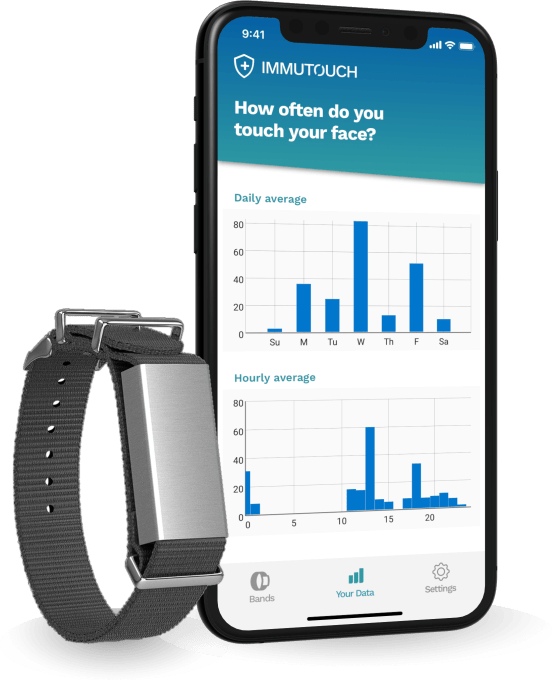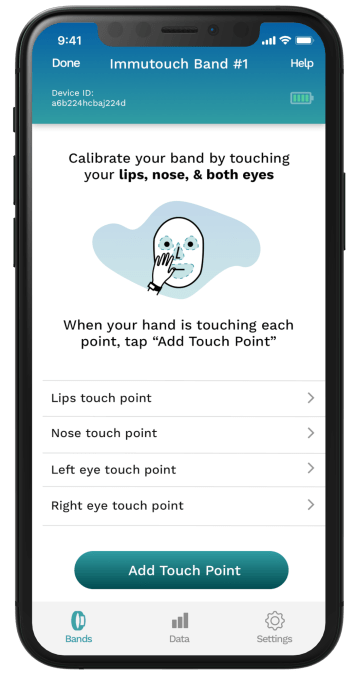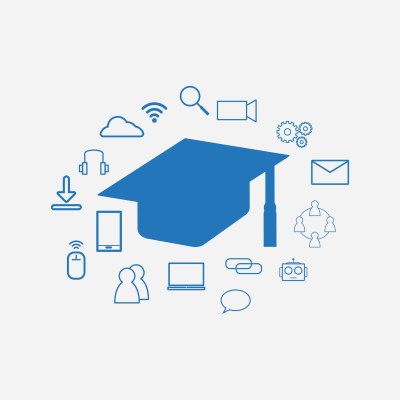Music
Trailers
DailyVideos
India
Pakistan
Afghanistan
Bangladesh
Srilanka
Nepal
Thailand
Iraq
Iran
Russia
Brazil
StockMarket
Business
CryptoCurrency
Technology
Startup
Trending Videos
Coupons
Football
Search
Download App in Playstore
Download App
Best Collections
Technology

BMW will not bring the iX3, the automakerfirst electric crossover, to the U.S., the latest automaker to shift its EV strategy to Europe and China.
BMW told Automotive News, the first media outlet to report the change, that at this time, it doesn&t have plans to bring iX3 to the U.S. market. The change is notable because the iX3 is based off of the X3, the most popular BMW model in the U.S.
The BMW iX3, which will be manufactured in China, is scheduled to come to market in the first half of 2021.
BMW unveiled the iX3 concept at the Auto China 2018 show in Beijing. The automaker is targeting the U.S., Europe and China for its broader EV strategy. However, the realities of the U.S. market, where automakers with the exception of Tesla have faced a tepid response to EVs, mixed with stricter emissions regulations in Europe, are now hitting home for BMW.
BMW isn&t the only automaker to pull back plans to bring upcoming electric vehicles to the U.S. Mercedes-Benz has delayed the U.S. launch of the electric EQC SUV by a year. The EQC is now scheduled to come to the U.S. in 2021.
Volkswagen has also tweaked its sales strategy for its upcoming ID electric lineup. The company will keep its compact hatchback, the ID.3, out of the U.S. Instead, VW plans to bring the ID.4, (otherwise known as the ID. Crozz) to the U.S., although even this vehicle will first launch in Europe.
- Details
- Category: Technology Today
Read more: BMW axes plans to bring electric iX3 SUV to US
Write comment (98 Comments)In the age of coronavirus, we all have to resist the urge to touch our faces. Ithow the virus can travel from doorknobs or other objects to your mucus membranes and get you sick. Luckily, a startup called Slightly Robot had already developed a wristband to stop another type of harmful touching — trichotillomania, a disorder that compels people to pull out their hair.
So over the last week, Slightly Robot redesigned their wearable as the Immutouch, a wristband that vibrates if you touch your face. Its accelerometer senses your hand movement 10 times per second. Based on calibrations the Immutouch takes when you set it up, it then buzzes when you touch or come close to touching your eyes, nose, or mouth. A companion app helps you track your progress as you try to keep your dirty mitts down.

The goal is to develop a Pavlovian response whereby when you get the urge to touch your face, you don&t in order to avoid the buzzing sensation. Your brain internalizes the negative feedback of the vibration, training you with aversive conditioning to ignore the desire to scratch yourself.
&A problem the size of COVID-19 requires everyone to do their part, large or small,& says Slightly Robot co-founder Matthew Toles. &The three of us happened to be uniquely well equipped to tackle this one task and felt it was our duty to at least try.&
The Immutouch wristbands go on sale today for $50 each and they&re ready for immediate shipping. You can wear it on your dominant hand that you&re more likely to touch your face with, or get one for each arm to maximize the deterrent.
&We&re not looking to make money on this. We are selling each unit nearly at cost, accounting for cost of materials, fabrication, assembly, and handling& co-founder Justin Ith insists. Unlike a venture-backed startup beholden to generating returns for investors, Slightly Robot was funded through a small grant from the University of Washington in 2016 and bootstrapped since.

Slightly Robot and Immutouch co-founders (from left): Joseph Toles, Justin Ith, and Matthew Toles
&We built Immutouch because we knew we could do it quickly, therefore we had the obligation to. We all live in Seattle and we see our communities reacting to this outbreak with deep concern and fear& Slightly Robot co-founder Justin Ith tells me. &My father has an autoimmune disease that requires him to take immunosuppressant medication. Being in his late 60with a compromised immune system, I&m trying my best to keep the communities around him and my family clean and safe.&

How to calibrate the Immutouch wristband
Based on a study using wearable warning devices to deter sufferers of trichotillomania from ripping out their hair, Immutouch could potentially be effective. University Of Michigan researchers found the vibrations reduced long and short-term hair pulling. Ith admits you have to actually heed the warnings and not itch to instill the right habit, and it doesn&t work while you&re lying down. The Immutouch stops short of electrically shocking you like the older gadget called Pavlok thatdesigned to help people quit smoking or opening Facebook.
Perhaps smartwatch makers like Apple could develop cheap or free apps to let users train themselves using hardware they already own. But until then, Ith hopes that Immutouch can gain some initial traction so &we can order larger quantities, reduce the price, and make it more accessible.&
Modern technologies like Twitter for rapidly sharing information could encourage people to take the right cautionary measures like 20-second handwashing to slow the spread of coronavirus. But having phones we constantly touch — before, during, and after we use the restroom — and then press against our faces could create a vector for infection absent from pandemics of past centuries. Thatwhy everyone needs to do their part to smooth out the spike of sickness so our health systems aren&t overrun.
Ith concludes, &Outbreaks like this remind us how we each individually affect the broader community and have a responsibility to not be carriers.&
- Details
- Category: Technology Today
Read more: Immutouch wristband buzzes to stop you touching your face
Write comment (92 Comments)
As Stanford, Princeton, Columbia and others shutter classrooms to limit the coronavirus outbreak, college educators around the country are clambering to move their classes online.
At the same time, tech companies that enable remote learning are finding a surge in usage and signups. Zoom Video Communications, a videoconferencing company, has been crushing it in the stock market, and Duolingo, a language teaching app, has had 100% user growth in the past month in China, citing school closures as one factor.
But Kristin Lynn Sainani, an associate professor of epidemiology and population health at Stanford, has a fair warning to those making the shift: Scrappiness has its setbacks.
&[The transition to online] is not going to be well-planned when you&re doing it to get your class done tomorrow,& said Sainani, who has been teaching online classes since 2013. &At this point, professors are going to scramble to do the best they can.&
As the outbreak spreads and universities respond, can edtech startups help legacy institutions rapidly adopt online teaching services? And perhaps more tellingly, can they do so in a seamless way?
- Details
- Category: Technology Today
Read more: Edtech startups prepare to become ‘not just a teaching tool but a necessity’
Write comment (91 Comments)
We here at TechCrunch are watching the novel coronavirus situation closely, as most of you likely are.
In addition to our editorial coverage of the effects of the novel coronavirus on the business of entrepreneurship — and the ways that technology can help — we have a number of events planned for 2020, including TC Early Stage in April in San Francisco and our TechCrunch Sessions: Mobility event in May in San Jose.
As of now we have not cancelled any of our events for the year, but we continue to monitor the situation very closely on a daily basis.
Our primary goal is to make sure we proceed in a conscientious and careful manner that takes into account local, state and federal guidance as well as our own personal care for all of our event attendees.
Just as it is with all of the members of our editorial and business staff, you&re the TechCrunch family and we will make sure that any decisions we make have you at heart, no matter what.
Much like the companies we cover, TechCrunch has always tried to stay nimble and adopt new ways of serving our readers. We&re in the process now of thinking hard about how to deliver on the promise of our events in a COVID-19 world. Stay tuned, we&ll have some interesting announcements ahead.
Over the years we&ve experimented with many virtual events like our huge Disrupt SF Virtual Hackathon and hosted hybrid virtual interviews on our stages, like the memorable chat at Disrupt in 2014 with Clayton Christensen and Bill Hambrecht — not to mention our coverage of and experimentation with just about every virtual telepresence platform ever invented. Whatever happens, you can depend on us to find interesting and innovative ways to bring together tech entrepreneurs, students, academics, investors and anyone passionate about building to talk, inspire and innovate like hell.
If you want to keep track of current updates to our plans for TechCrunch events throughout the year, please use this page as your resource of record.
As always, we&ll keep you posted. Thank you.
- Details
- Category: Technology Today
Read more: TechCrunch Events and coronavirus
Write comment (91 Comments)Just a few hours after the markets closed the books on one of its worst trading days since the dawn of the financial crisis, President Donald Trump and members of the coronavirus task forcetook to the podium in the White House press briefing room to tease an economic stimulus package in an effort to stabilize shaky markets.
In a brief statement before the press corps, the president hinted at a possible payroll tax cut and emergency support for businesses looking to guarantee that hourly workers are protected from job loss and lost wages as social distancing becomes recommended practice in response to the spread of COVID-19.
&We&re going to be talking about hourly wage earners getting help so that they can be in a position where they&re not going to miss a paycheck,& the president said. &So that they don&t get penalized for something thatnot their fault.&
Trump intends to speak with representatives of the Small Business Administration to create potential loans for small businesses affected by response efforts from federal, state and local governments.
&This is about providing proper tools and liquidity to get through the next few months,& said Treasury Secretary Steven Mnuchin, at the briefing.
The president left the podium without responding to reporters& questions about whether he had been tested for COVID-19, after reports surfaced earlier today that several members of Congress who had met with the president had been exposed to the disease last week at a gathering of national conservative leadership.
Vice President Mike Pence then outlined the latest steps from the U.S. government to respond to the spread of the disease while emphasizing most Americans& risk of contracting the disease remained low.
&The risk of contracting the coronavirus to the American public remains low and the risk of serious disease also remains low,& the vice president said yet again.
Meanwhile, the American private health industry is working overtime to develop vaccines, treatments and diagnostic testing tools to buttress the work being done in national laboratories.
As more private tools come to market, the question will be who will ultimately foot the bill for treatment of the disease as it spreads.
Some epidemiologists contend that the U.S. remains unprepared for the severity of the diseasespread, and that even a good scenario means that millions of Americans will be sickened and need some sort of consultation or care.
The governmentresponse to stabilize markets follows the advice laid out in a series of policy suggestions from the International Monetary Fund and advocated by Dr. Scott Gottlieb, the former head of the Food and Drug Administration, who has returned to the private sector as a managing director of the venture capital firm NEA.
- Details
- Category: Technology Today
Read more: President teases stimulus package to boost a US economy hit by COVID-19 fears
Write comment (98 Comments)
When Zapier was founded in 2011, it was a side project for three friends from Missouri who wanted to make it easier to connect any one web app to another. Nine years, millions of users and around 300 employees later, itone of the most highly valued companies to ever go through Y Combinator — and they did it all with a team that is entirely remote.
I chatted with Zapier co-founder and CEO Wade Foster to find out why they decided to go remote from the start, and how the company addresses the challenges of scaling up a distributed team. Hereour chat, lightly edited for brevity and clarity.
TechCrunch: Why remote?
Wade Foster: I&ll give you a little of the origin story.
We started as a side project… and side projects can&t afford offices. So we&re kind of working via coffee shops, our apartments, wherever we could get the job done.
We moved out to the Bay Area from Columbia, Missouri for [Y Combinator] . That summer, we were all three in the same apartment — the only time in the companylife cycle where the whole company was together. At the tail end of that, Mike, one of my co-founders, moved back to Missouri to be with his then-girlfriend/now-wife as she was wrapping law school. So we were remote by necessity there.
- Details
- Category: Technology Today
Read more: Zapier CEO Wade Foster on scaling a remote team up to 300 employees
Write comment (95 Comments)Page 1289 of 1446

 19
19






 (@mims) March 9, 2020
(@mims) March 9, 2020